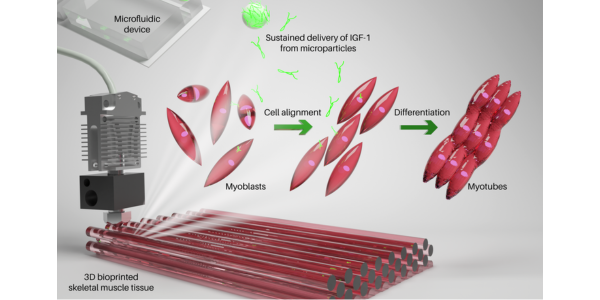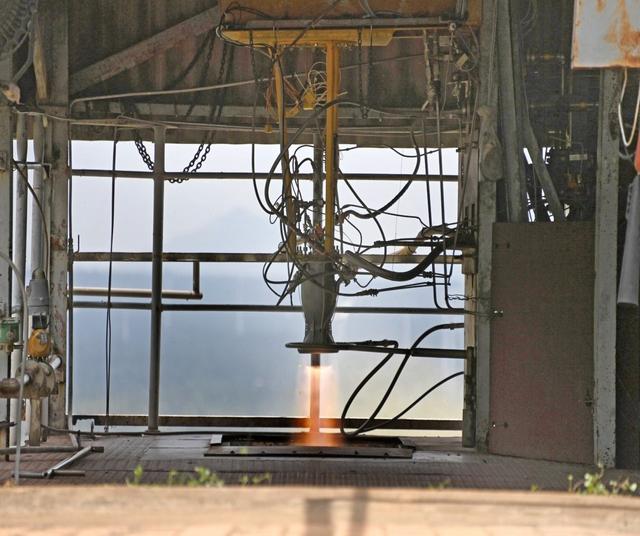Researchers from the Terasaki Institute for Biomedical Innovation (TIBI) in Los Angeles developed a new bioink that can promote the growth of 3D-printed muscle tissue. With this new development, researchers would be able to develop new therapies to help patients who have muscle damage or loss, as a result of trauma, disease, or surgical procedures. The study is published in the journal Macromolecular Bioscience.
The new approach would end the limits set by the current autologous transfer, which presents transferring healthy muscle tissue to the affected area while also impacting the area from which this healthy tissue was taken and risking complications after the transplantation. Growth and regeneration of the 3D-printed muscle tissue are achieved through a sustained-release hormone used by the new bioink. It also has insulin-like growth factor-1 (IGF-1) as a key ingredient, which is crucial for bone and tissue growth. According to TIBI, their approach “utilizes 3D bioprinting with a bioink composed of GelMA (a biocompatible gelatin-based hydrogel), myoblast cells, and microparticles engineered for sustained delivery of IGF-1”.
As said by TIBI’s Director and CEO, Ali Khademhosseini, Ph.D. “The sustained release of IGF-1 facilitates the maturation and alignment of muscle cells, which is a crucial step in muscle tissue repair and regeneration,”, adding that “There is great potential for using this strategy for the therapeutic creation of functional, contractile muscle tissue.”
It was confirmed that the printing process did not damage the cells three days after the bioprinting of muscle constructs. The 3D-printed muscles were implanted into mice, and after six weeks, the muscle tissue regeneration was most successful in mice that received constructs with sustained-release IGF-1. The researchers also confirmed that the tissue was accepted by the body after implantation.
However, further studies and tests will be crucial before starting to treat humans. In any case, 3D muscle tissue printing has great potential for innovation in the healthcare industry.







